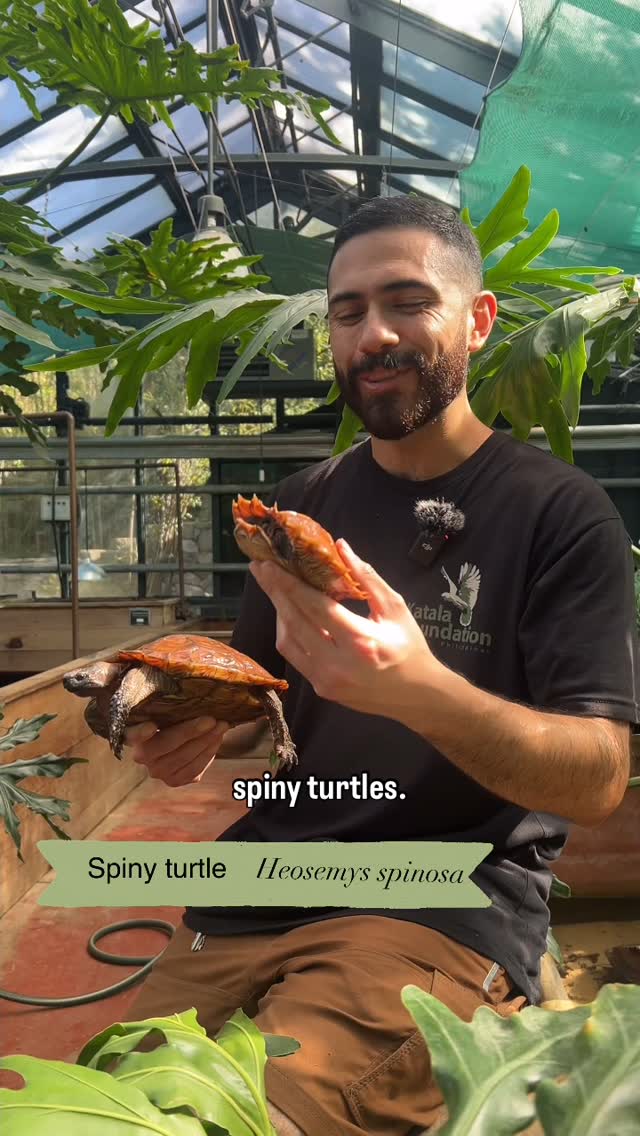- Overview of the Spiny Turtle’s physical characteristics and its evolutionary adaptations
- Geographic distribution and habitat preferences of the Spiny Turtle
- Current conservation status and key threats facing the Spiny Turtle
- Impact of palm oil production on the Spiny Turtle’s survival and steps for conservation
- How individuals can contribute to Spiny Turtle conservation efforts
The Spiny Turtle (Heosemys spinosa) fascinates herpetologists and conservationists alike due to its distinctive appearance and unique evolutionary features. Primarily known for its characteristic spiky shell, the Spiny Turtle’s marginal scutes develop into sharp spines during its youth. This adaptation is an effective defense mechanism against predators, providing protection during the turtle’s vulnerable early years. With age, these spines reduce, giving way to smoother edges as maturity brings increased size and a harder shell, which naturally deters threats.
Native to Southeast Asia, the Spiny Turtle inhabits regions spanning Myanmar, Thailand, Malaysia, and Singapore, with additional populations on Sumatra and Borneo. This turtle thrives in lowland primary and secondary forests, often near streams or marshy environments. Its preference for such habitats reflects its adaptation to humid, densely vegetated environments where it can forage for its diet that predominantly consists of fallen fruit and vegetation.
Nevertheless, the Spiny Turtle is not limited to a single habitat type. It demonstrates versatility by occupying diverse ecological niches within its range. However, such adaptability has not shielded it from significant environmental pressures. Its reliance on certain forested habitats means deforestation poses an immense threat to its survival, as these vital areas are often cleared for agriculture or urban development.
The conservation status of the Spiny Turtle is of pressing concern. Classified as endangered, this species faces numerous anthropogenic threats that jeopardize its existence. Habitat loss due to rampant deforestation, especially for palm oil plantations, is perhaps one of the most significant dangers. The Spiny Turtle also suffers from illegal wildlife trade, where it is captured for the pet industry or used in traditional medicine practices, further depleting wild populations.
Palm oil production has a particularly detrimental impact on the Spiny Turtle. As forests are cleared to make way for plantations, the loss of habitat forces turtles into less suitable environments, increases the risk of predation and decreases food availability. The expansion of palm oil industries has made it challenging to maintain the ecological balance necessary for the survival of species like the Spiny Turtle. Thus, a crucial aspect of their conservation involves addressing the effects of palm oil cultivation and advocating for sustainable practices.
Individual actions can significantly influence the conservation trajectory of the Spiny Turtle. Reducing the consumption of products containing non-sustainably sourced palm oil is an impactful measure. This involves supporting companies that adhere to sustainable palm oil certifications and carefully checking product labels, especially common items like peanut butter and chocolate, for palm oil content. Apart from consumer choices, raising awareness and educating others about the plight of the Spiny Turtle encourages broader support for conservation efforts.
Engaging with local and international conservation groups is another way to aid the Spiny Turtle. Supporting organizations working to protect its habitat, combat wildlife trafficking, and enforce conservation laws can lead to tangible outcomes. Participating in citizen science projects or contributing to research can also provide valuable data needed to develop effective conservation strategies tailored to the specific needs of the Spiny Turtle.
Understanding the life and challenges faced by the Spiny Turtle underscores the importance of biodiversity and the interconnectedness of ecosystems. Each species, regardless of size or fame, plays a vital role in its environment. Protecting the Spiny Turtle requires a commitment to environmental stewardship and a willingness to adapt our habits for the benefit of our planet’s rich and varied wildlife.
*****
Source Description
Sunday species spotlight: the Spiny Turtle!
The Spiny turtle (Heosemys spinosa) is native to Myanmar, Thailand, Malaysia, and Singapore and can also be found on the islands of Sumatra and Borneo. They are commonly called ‘Spiny turtles’ because of the shape of their marginal scutes, which are quite sharp when the turtles are young. These spines are an excellent example of an evolutionary trait developed to discourage predators from eating the turtle during the first few years of their life.
Despite conservation efforts, the Spiny turtle is still endangered. There are a number of ways you can help, such as reducing your consumption of palm oil. Be sure to check the label on peanut butter and chocolate candies; most major brands, unfortunately, use palm oil.


